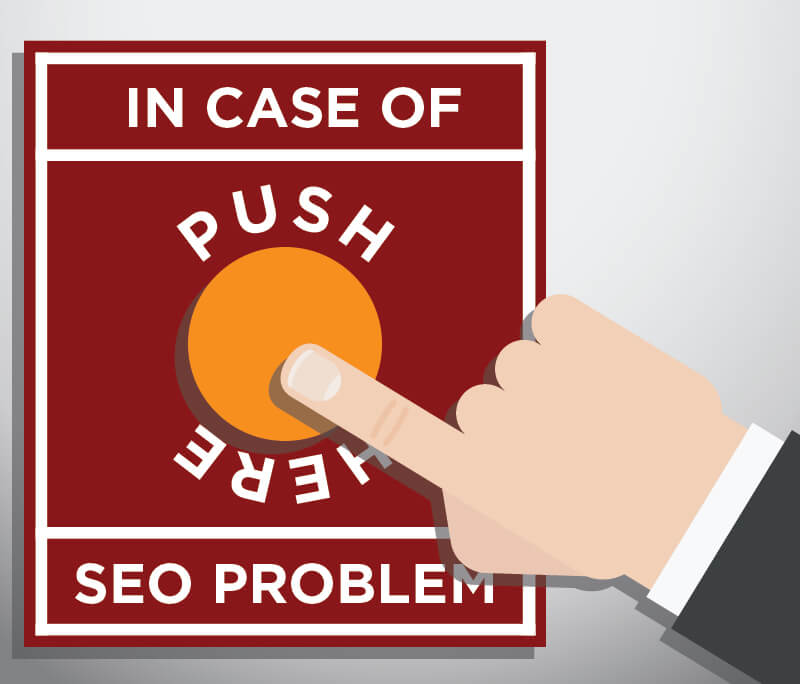If you have responsibility for SEO traffic within your organization (or someone else’s), there will be many points in your career when you will likely have to answer the question “Why did our SEO traffic or rankings change?”
This is the point where many SEOs will head to the blogosphere to see what recent algorithm shift is in the news. That’s a valid step in figuring things out, but keep in mind that Google makes hundreds of algorithm changes every year, and only a handful of them make headlines.
Here’s the panic-free approach I use to figure out “the what and the why of those pesky Google algo changes.
1. What actually happened?
Before you’re prepared to start answering questions about WHY your traffic changed, make sure you can fully describe WHAT actually changed.
This means getting an understanding of:
- Which page set(s) experienced traffic changes (what was the % change for each page type?)
- Which search engine(s) showed the change?
- Was the change concentrated in any particular geographic region?
- Did the same pattern occur last year? Are there any seasonal events that impact your industry?
- How did the traffic change impact conversions?
[Tweet “Before you can evaluate WHY your search traffic dropped, you need to be able to accurately describe WHAT actually happened. More at”]
Usually you can answer those questions with the data that comes from analytics. However, there is still a deeper level that you can get to, especially if you want to be able to answer WHY traffic changed:
- Which keyword sets were responsible for the traffic changes to each major page type?
- Which sites gained in rankings across each shifting keyword set and which sites lost in rankings?
- Were there any major SERP layout changes across the shifting keyword sets?
As an illustration, imagine that you dig into the ranking changes and find that most of your falling keywords were short tail category keywords and all the sites that moved up in ranking were informational in nature, while all the sites that moved down were transactional.
This is the type of change that happens quite frequently, indicating a shifting interpretation by the search engine of searcher intent across the query set. If you are responsible for one of the transactional sites, this is a much more pleasant situation to explain to your CEO than if your direct competitors are passing you by.
[Tweet “Some search traffic changes are industry-wide and beyond your control. Learn how to evaluate how algorithm changes affect your traffic at”]
Track all the keyword sets
In order to be able to make those more specific determinations about WHAT happened in the SERPs, you need to be collecting full SERP data across your major keyword sets on an ongoing basis, and you need to make sure that data is structured to allow you to segment effectively.
For example, an eCommerce site might want to look at average keyword ranking changes across the following groups:
- Category – short-tail (widgets)
- Category – mid-tail (square widgets)
- Brand – short-tail (Brand X)
- Brand – mid-tail (Brand X square widgets)
- Product (Brand X + Manufacturer’s Part Number)
- Informational (How to choose the best widget)
In addition to using a tool that captures the entire first page of ranking results for the queries you track, it can be helpful to periodically get your own screen grabs of the SERP to see layout changes that may or may not be reflected in whatever interface your rank tracking tool offers. This is a great thing to do, but make sure you have an organized method for archiving these, so you can easily get at the information later when you need it.
2. Time to push the alarm button?

When you can restrict your “we have an SEO problem” alarm to cases where you are losing ground to actual competitors, you will find that life becomes a little less stressful.
Competitive landscape: In cases where your competitors ARE passing you by, how can you characterize the drop? Is it just you dropping against the entire SERP (possible penalty or algorithmic devaluation of your site) or are there other winners/losers in your industry – and if so, what do they have in common?
Brand power: Sometimes you will see that stronger brands are gaining ground and other times you will see that little players seem to be getting more of a shot.
Basic SEO: You may see an emphasis/de-emphasis on exact match keywords in the title. Or you may see that most of the sites that fell seem to be creating pages that are more for SEO than for their regular users.
Whatever the case may be, many of the factors discussed above will ebb and flow in their algorithmic weighting. It’s best not to be reacting to every shift in the SERP landscape. You should have a long-term plan that is in alignment with best SEO practices and creating maximum value for your users.
Unless something in your investigation tells you that you may have misjudged what should be part of your long term plan, stick to the plan. Ultimately, if you have a good long term plan, collecting all this extra data should help to give you support for sticking to that plan – AND being able to effectively identify the limited number of cases when you really do need to re-examine your strategy.

